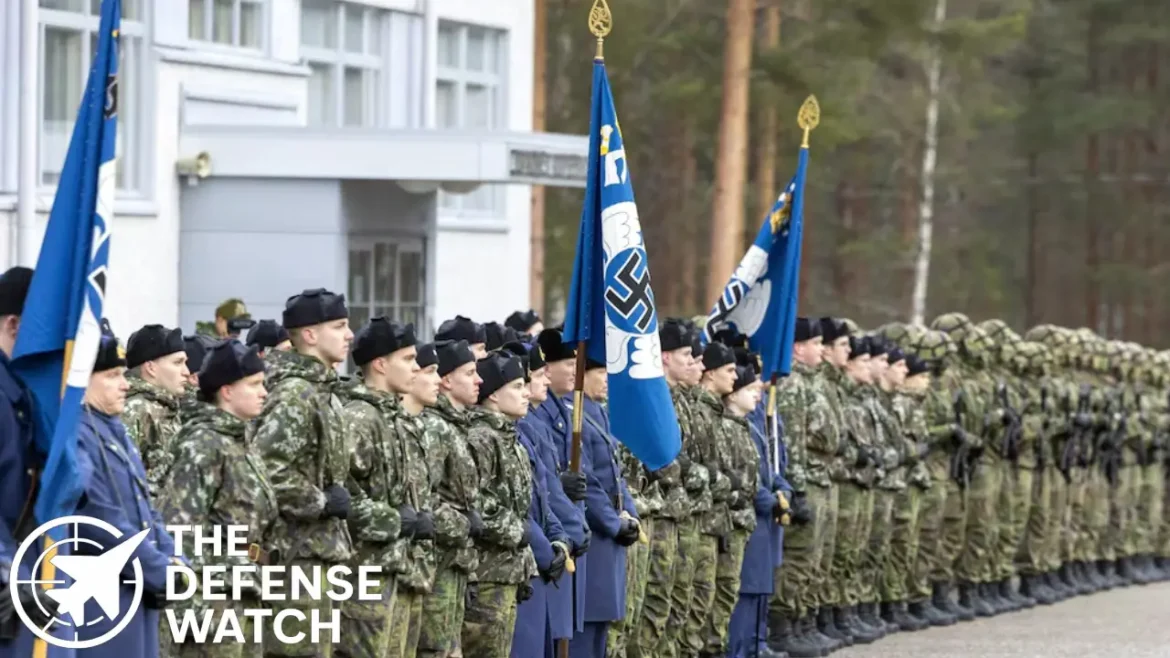Finland Air Force to Retire Swastika Flags
Finland’s Air Force is preparing to phase out swastikas still displayed on a handful of unit flags, a move aimed at avoiding diplomatic awkwardness with NATO allies and foreign visitors. While Finland insists its use of the swastika predates Nazi Germany, the symbol’s strong association with tyranny and hate groups has increasingly posed challenges for Helsinki since joining NATO in 2023.
The Finnish Defense Forces confirmed that a program to renew Air Force unit flags began in 2023, the same year Finland formally entered the alliance. Officials said the decision was not directly linked to NATO accession but rather part of a broader effort “to update the symbolism and emblems of the flags to better reflect the current identity of the Air Force.”
An Ancient Symbol with Modern Controversy
The Finnish Air Force adopted the swastika in 1918, when Sweden’s Count Eric von Rosen donated Finland’s first aircraft marked with his personal emblem — a blue swastika on a white background. The symbol became the service’s insignia until 1945, appearing on aircraft, flags, and academy emblems.
However, its use became controversial after Nazi Germany adopted the same symbol in the 1930s. Despite Finland stressing that its swastika had no connection to Hitler’s regime, the historical overlap complicated its international perception. Von Rosen himself was later linked to Nazi circles, being the brother-in-law of Hermann Göring, who would go on to command the Luftwaffe.
“Sometimes awkward situations can arise with foreign visitors,” Col. Tomi Böhm, commander of the Karelia Air Wing, told Finnish public broadcaster YLE. “It may be wise to live with the times.”
NATO Membership Accelerates Change
Finland’s move comes as it deepens integration with NATO’s command structure. Experts note that the swastika, while historically distinct in Finland, remains deeply taboo across much of Europe.
Teivo Teivanen, professor of world politics at the University of Helsinki, told Helsingin Sanomat that the swastika had become an “embarrassing symbol in international contexts.” He noted that in 2021, German Air Force personnel skipped a final ceremony in Lapland after learning swastika-bearing flags would be displayed.
This context has made it increasingly difficult for Finland to reconcile its traditions with alliance interoperability. New unit flags, expected to feature an eagle motif, will gradually replace the older banners at parades and military ceremonies.
A Logical Continuation of Reform
The Finnish Air Force already removed the swastika from its command emblem several years ago, part of a gradual modernization effort. The Defense Forces emphasized that the current flag replacement program is simply the latest stage in aligning symbols with contemporary military identity.
“The traditional Von Rosen swastika emblem, in use since 1918, has already been removed from most other Air Force emblems during earlier reforms, so its removal from the unit flags is a logical continuation of this work,” the military said in a statement.
Analysis: Balancing Tradition and Alliances
Finland’s decision underscores the broader challenge of balancing national traditions with multinational defense obligations. While the swastika in Finland predates Nazi Germany, the global perception of the symbol is overwhelmingly negative. For a new NATO member located on the alliance’s front line with Russia, maintaining cohesion and avoiding unnecessary friction with key allies such as Germany and France carries strategic weight.
Symbolism in defense organizations is not merely ceremonial — it also communicates values, unity, and interoperability. For Finland, retiring the swastika from military use is both a diplomatic necessity and a symbolic marker of its transition from historic neutrality to NATO integration.
FAQs
The swastika was adopted in 1918 when Sweden’s Count Eric von Rosen donated Finland’s first aircraft marked with the symbol, decades before Nazi Germany.
Finnish officials say the decision was not directly tied to joining NATO, but analysts note that alliance integration accelerated the move.
The Defense Forces said new designs featuring an eagle emblem will gradually replace existing flags.
According to experts, four units introduced in the 1950s continue to display the symbol.
The Defense Forces did not specify an exact timeline but said the work is ongoing.


2 comments
[…] incident comes amid growing unease across NATO about cross-border incidents since Russia’s full-scale invasion of Ukraine began in February […]
[…] Reach: Strong interoperability with allied air forces across NATO, the Middle East, and […]